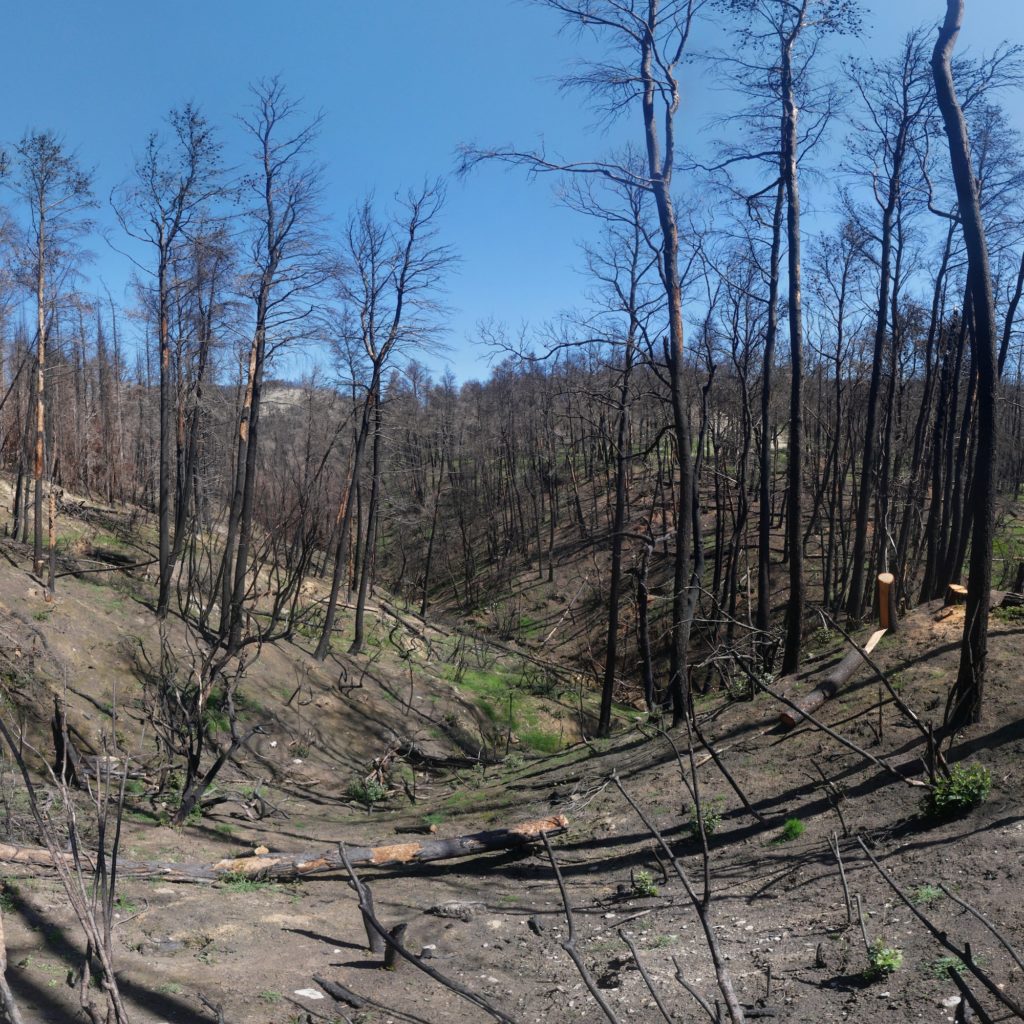
After the forest fires around Athens in August 2021 (read the original article here), whole swaths of land will consist mainly of deadwood for many years to come. A visit to a burned forest in the north of Athens at the foot of Mount Parnitha gives some hope for the forest’s ability to regenerate on its own.
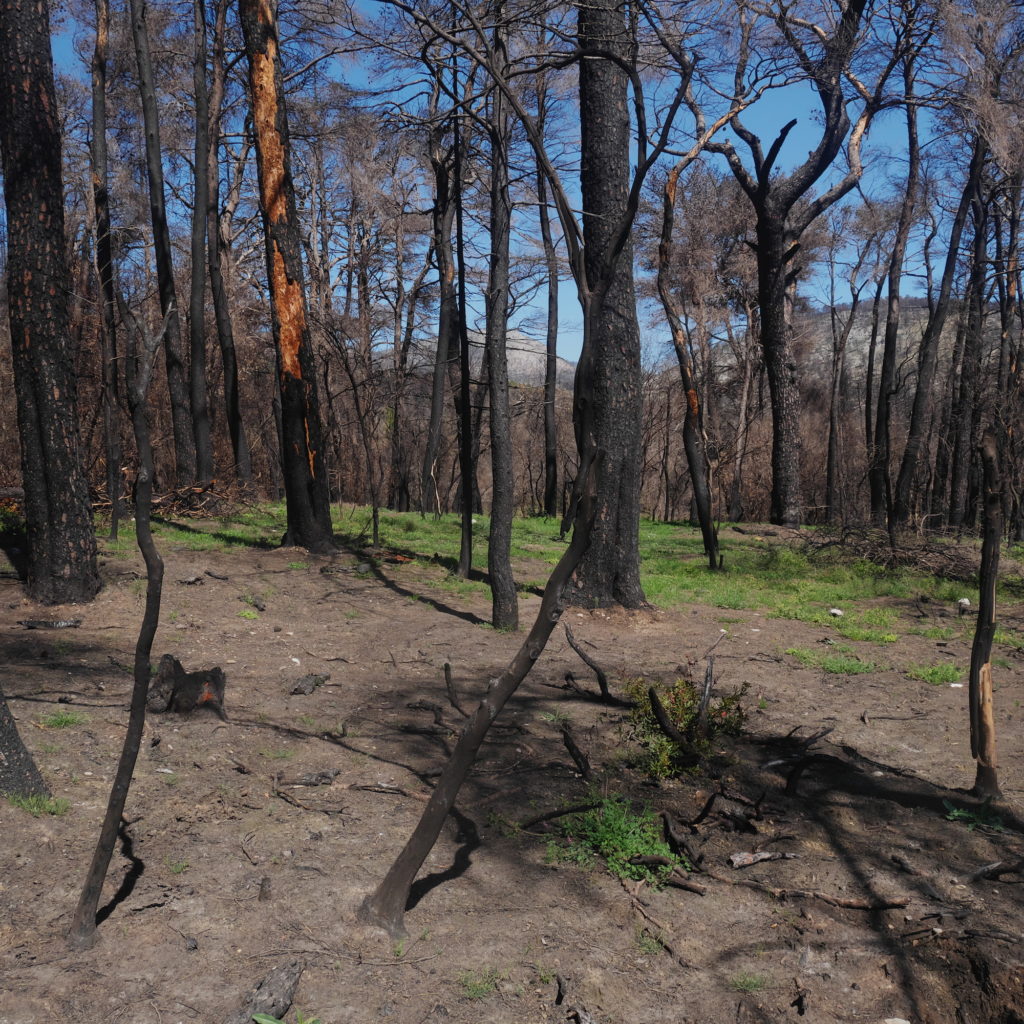
After the winter snow & rain, annual plants are now beginning to recolonize the areas in the spring eight months after the wildfires until the summer drought stops any growth in May or June.
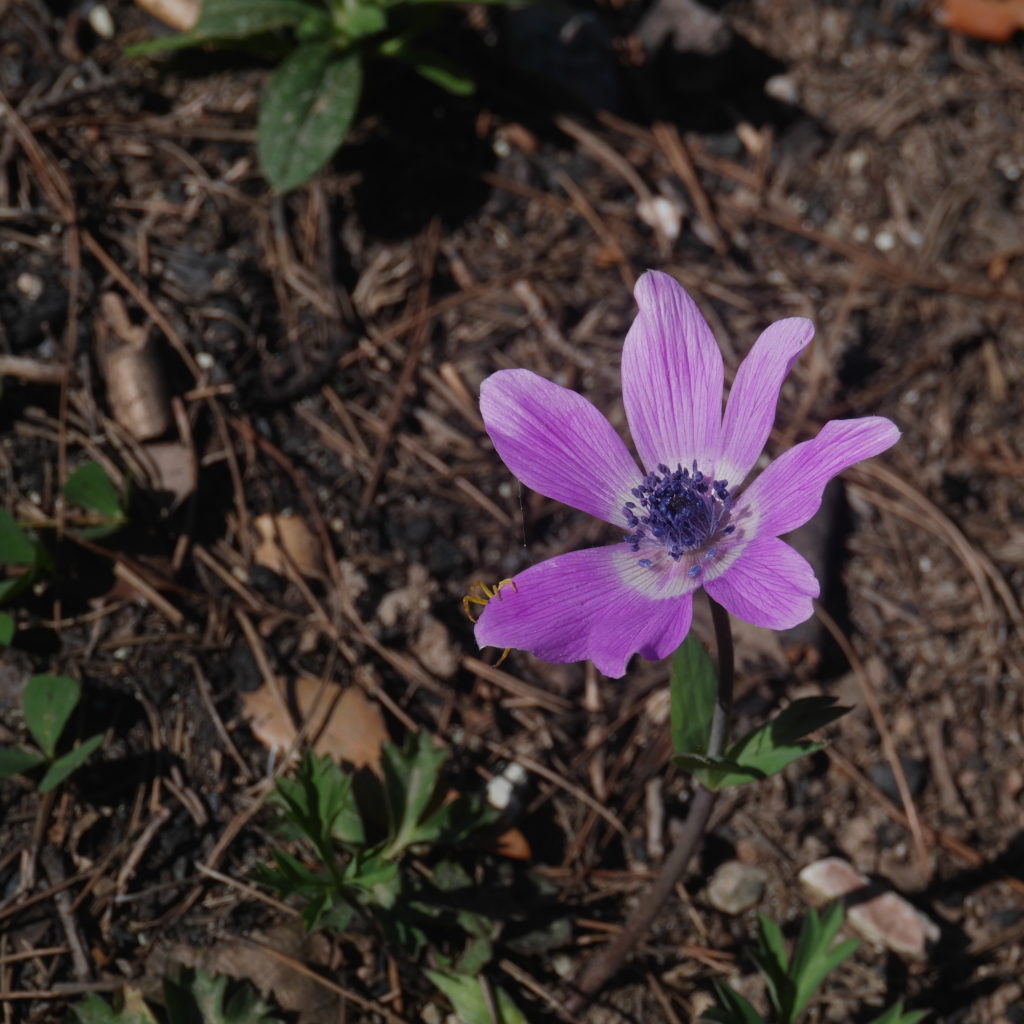
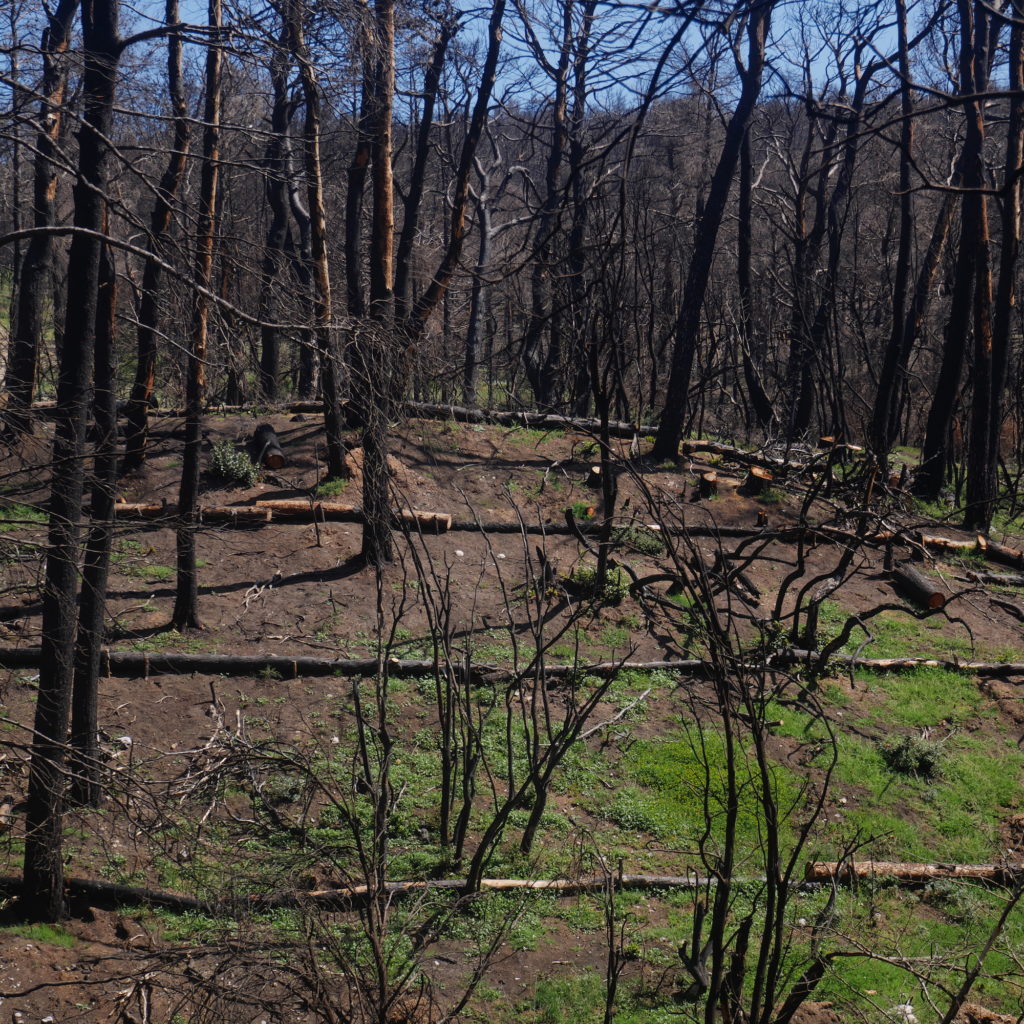
This thin and fragile vegetation is not yet very effective in protecting the ground against erosion. Therefore, it is important to keep the soil in place as much as possible. For this purpose, the dead trunks are ideal as barriers along the contour lines.
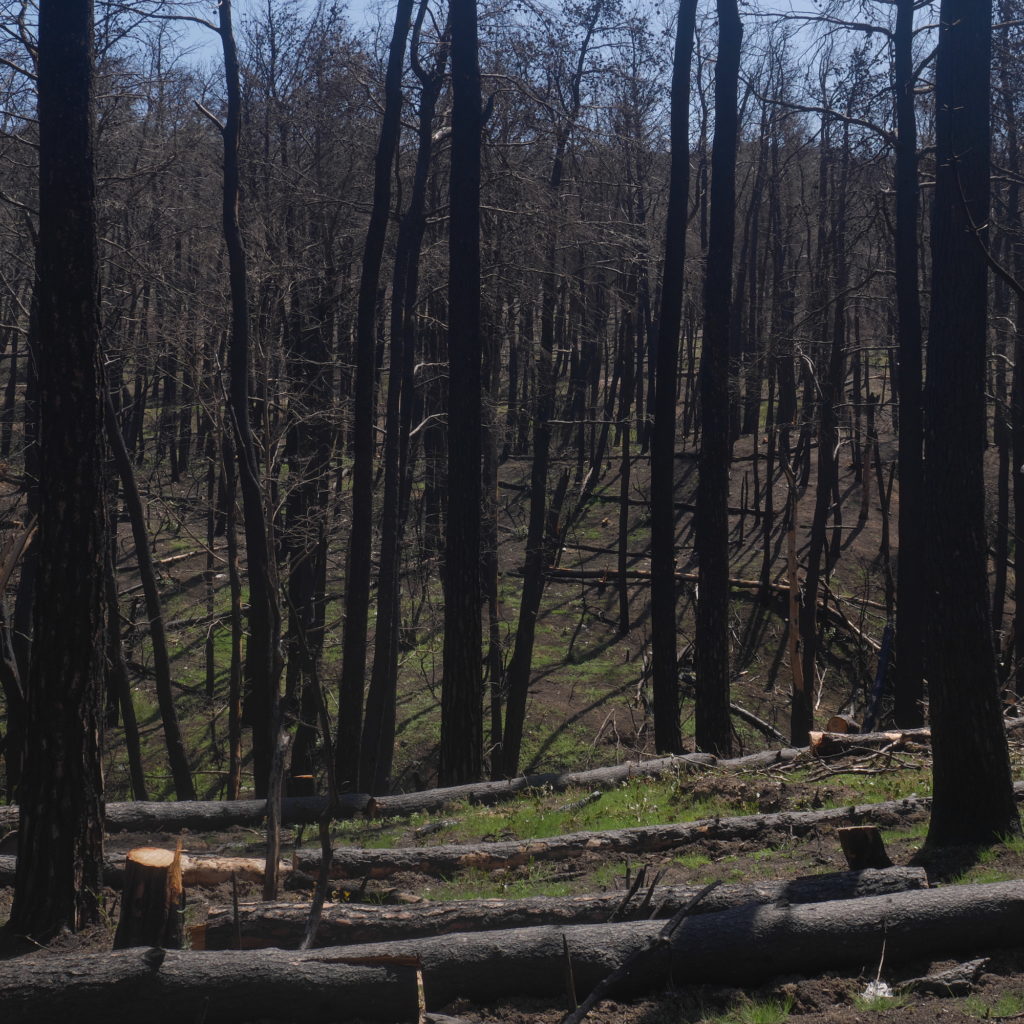
Of course, structuring large areas of land in this way requires a great deal of work.
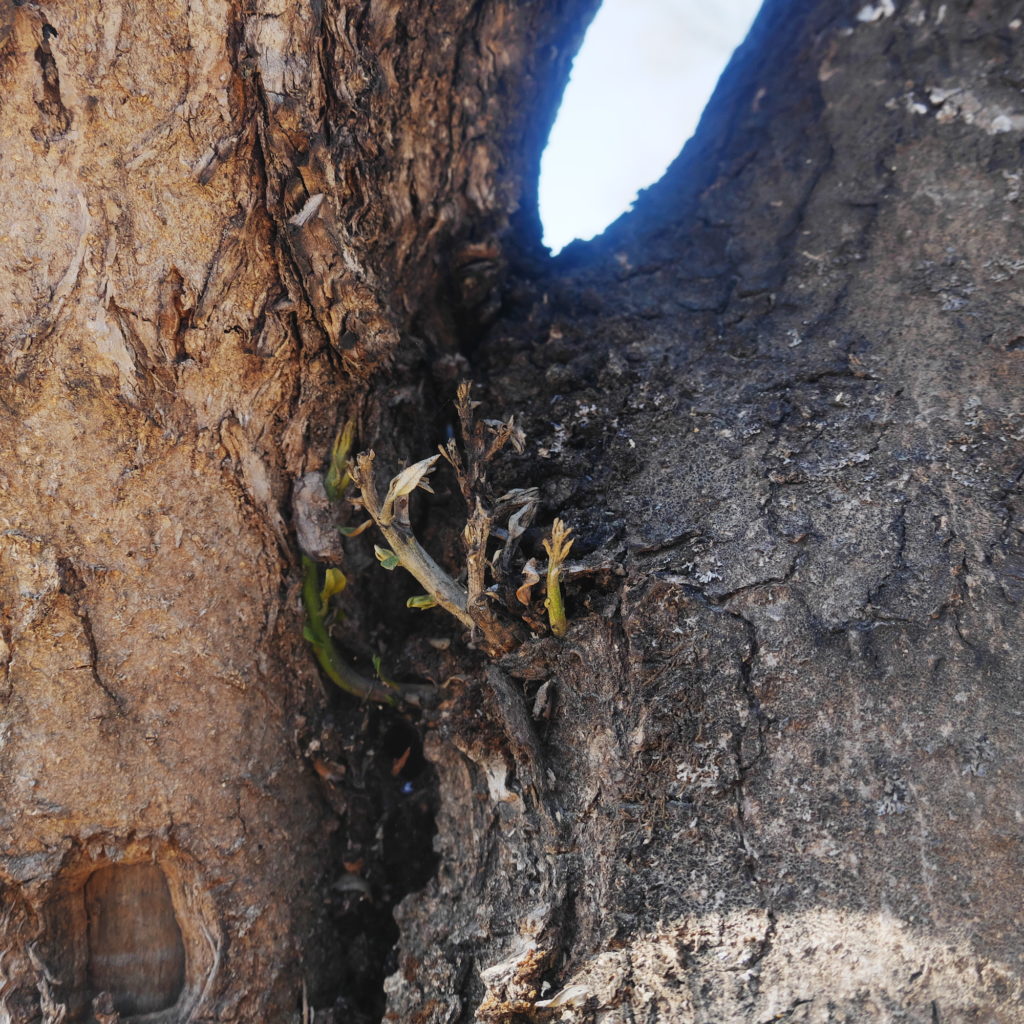
One of the few trees that didn’t die completely from the heat is trying to sprout new branches from its half-burned trunk.
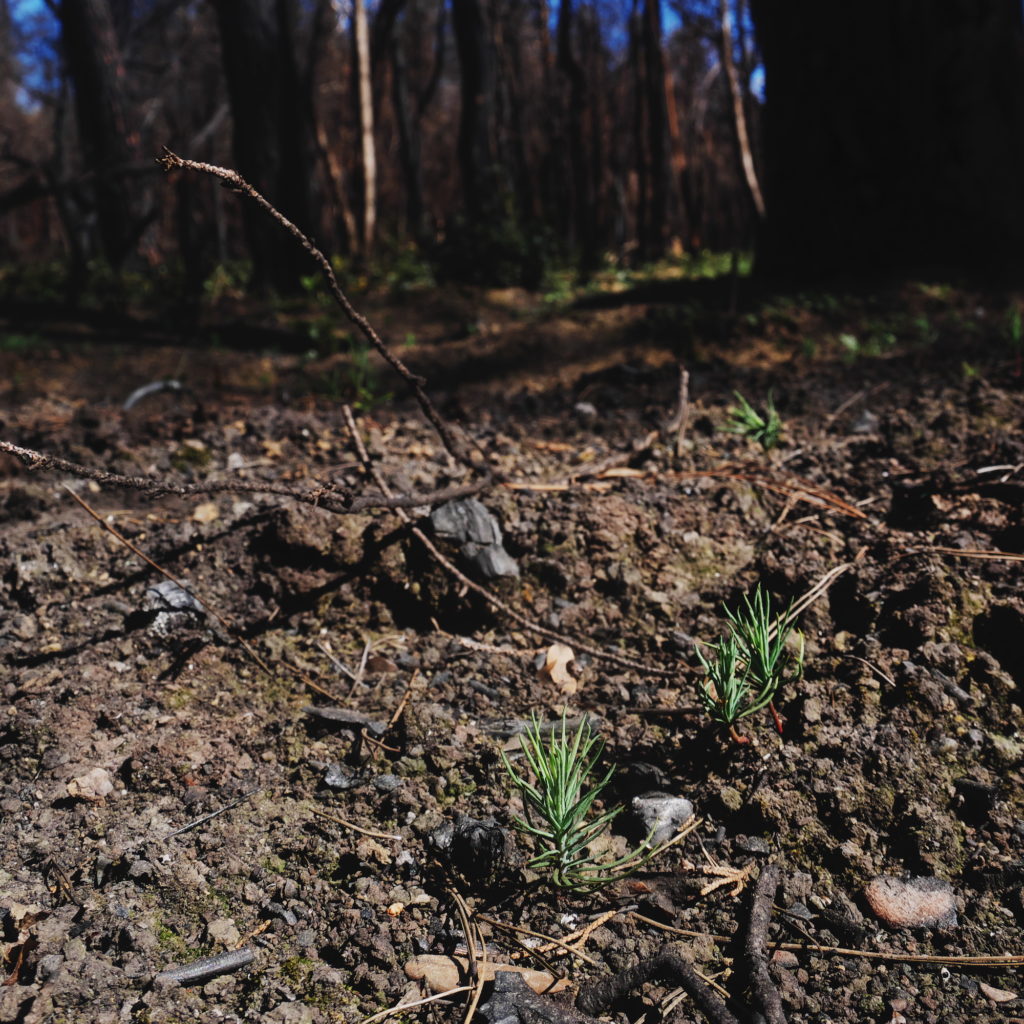
In many places, small pines are shooting out of the ground as well. The forest of the future is already growing again. The seeds lay in the soil waiting for their chance. Since they are the seeds of the local trees, genetically they have a better adaptability to the place than non-local seedlings. Hopefully the summer will not be too dry so that these young saplings have a chance to survive.
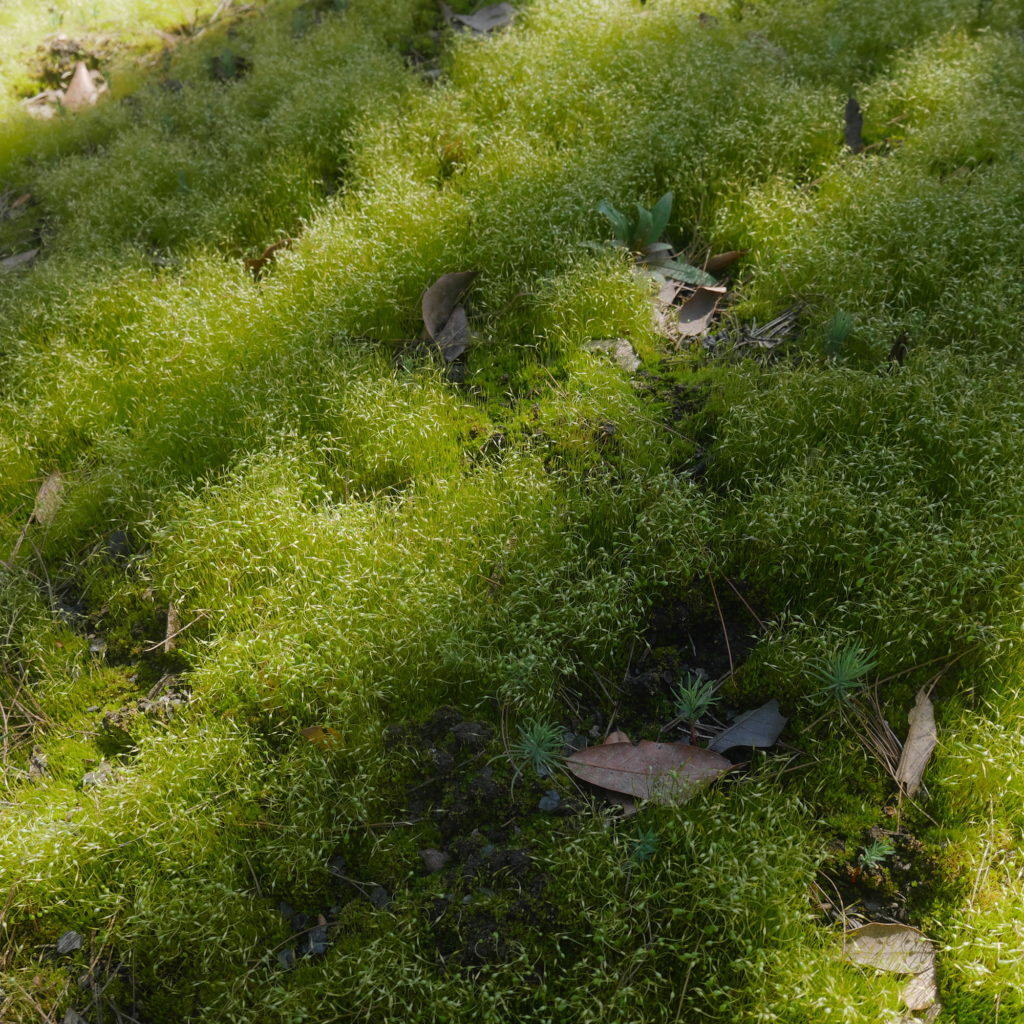
Places where mosses & other pioneers grow are more likely to give small pines a higher chance of survival because the soil is better protected from drying out in such locations.
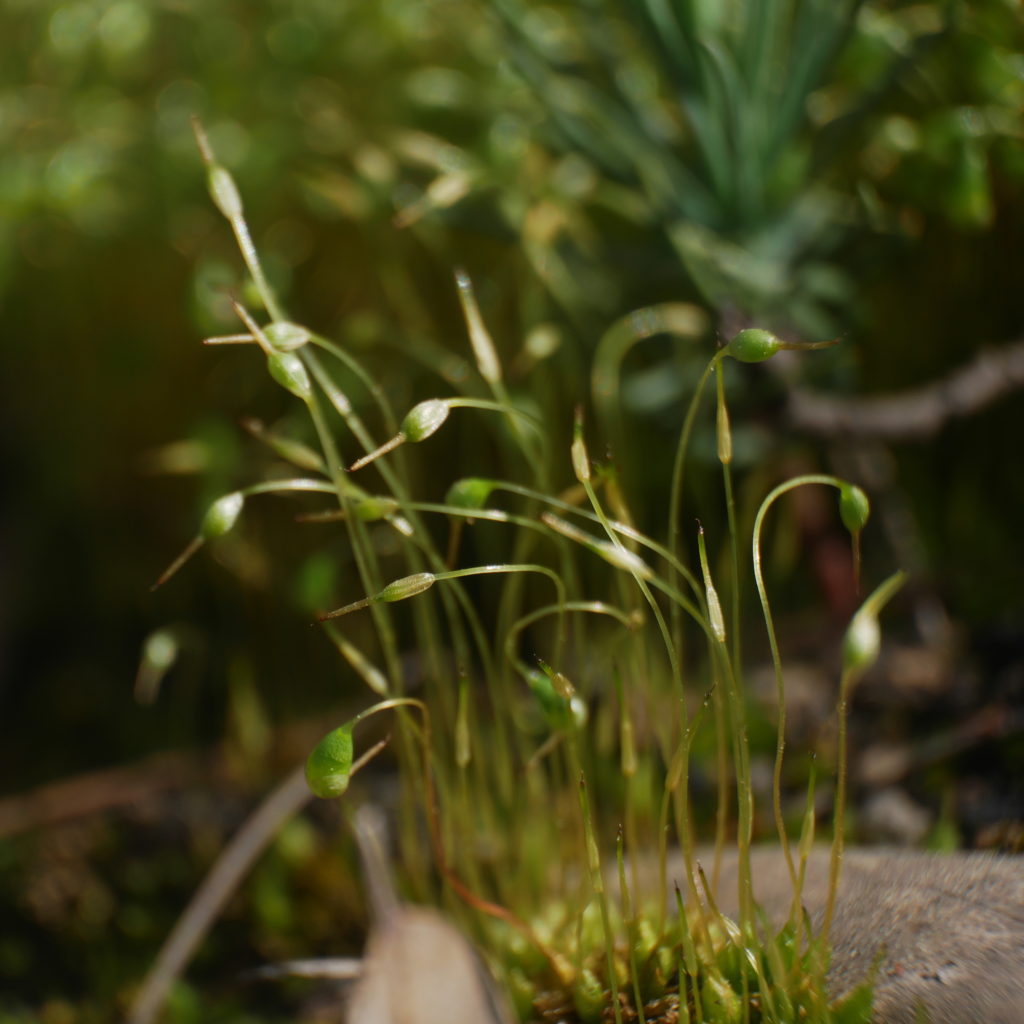
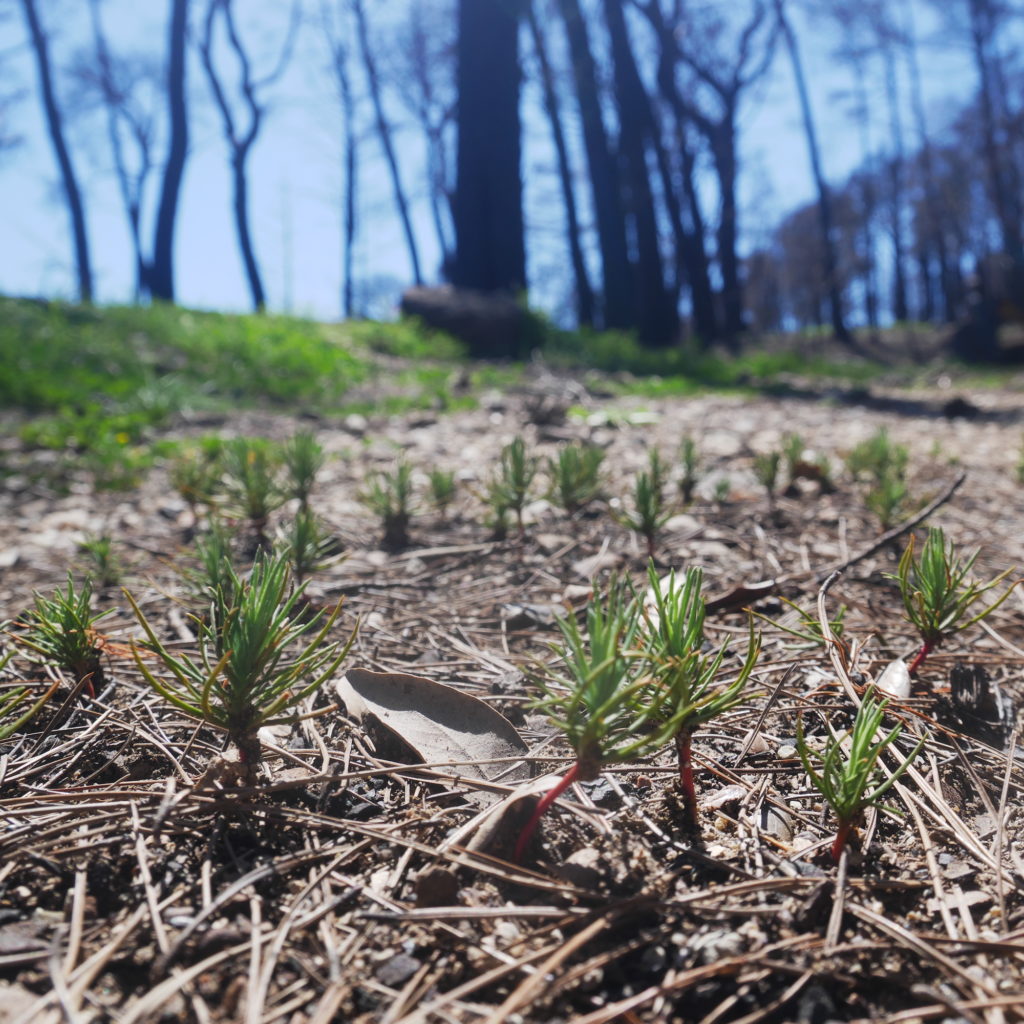
If all proceeds well and the forest is left to its own resources as much as possible, then in a few years there will be a small patch of young trees on this spot, supporting and bringing up each other.
Matthias Fritsch is part of the core team of the forest garden in Rehfelde. For professional and private reasons, he is always on the road with the European long-distance bus network between Berlin and Athens & as a filmmaker regularly documents phenomena related to climate change. As a freelance artist he develops his own solutions and routines for a resource-saving everyday life. In Rehfelde he initiated e.g. the experimental gardens, the shade tree nursery and the seedlings forest.

